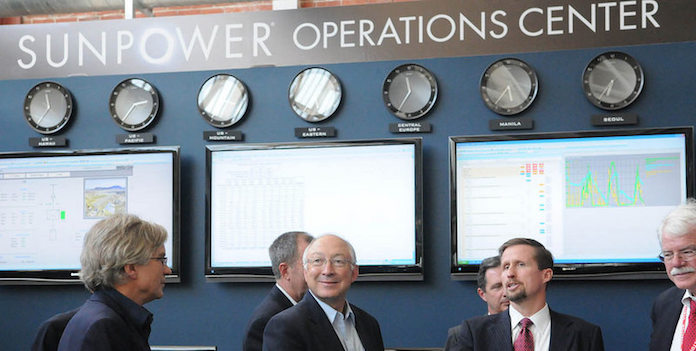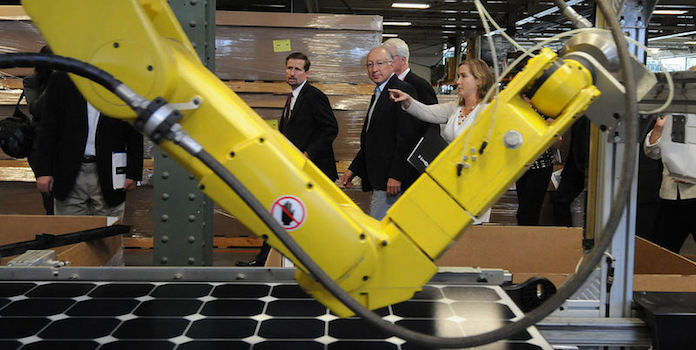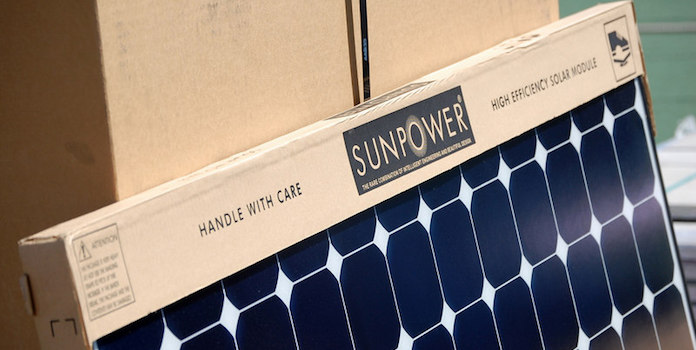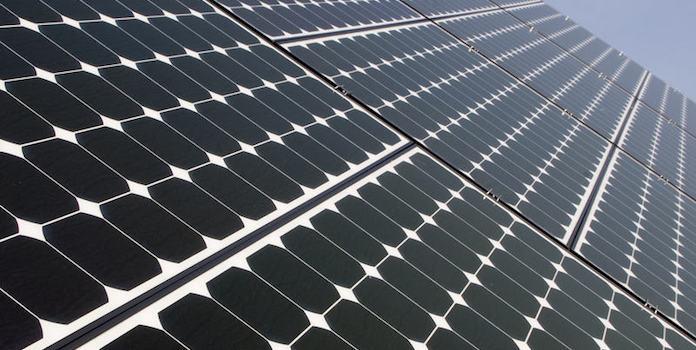Sunpower Solar Panels: Great Products, Hurting Company

Sunpower’s solar panels are great, but recent layoffs and a factory closure are cause for concern
Sunpower has been around for over 30 years – a veritable dinosaur by solar industry standards. But they’re a dinosaur in a good way, as Sunpower solar panels are some of the best in the industry, thanks to the company’s expertise, know-how, and innovation.
Unfortunately, even with all the accolades Sunpower receives for its solar panels, and despite its high revenues, the actual company continues to suffer from debt, layoffs, and a recent factory closure.
What makes Sunpower’s solar panels so great, and what does the future hold for the company? Let’s delve into all this now.
#1 Who is Sunpower?
Sunpower is one of the oldest US-based solar manufacturers out there, founded in 1985 in Silicon Valley, where it is still headquartered today. They both manufacture and install solar panels for residential, commercial, and utility-scale projects. So far, they have generated over 18 million megawatt-hours of electricity. That’s enough energy to power over 1.6 million average-sized US homes for a year!
Over the years, Sunpower has provided solar panels for NASA and Toshiba, and acquired several solar companies around the world to increase their scale. The company went public in 2005 and, in 2011, the very-large and very-profitable French oil and gas company Total bought 60% of Sunpower’s shares, making them the majority shareholder (a title they retain as of July 2017).
Today, Sunpower is known mostly for their ultra-high efficiency solar panels, which broke the world record for residential solar panels in 2016.
Sunpower doesn’t install these panels themselves, but instead uses a network of pre-approved installers throughout the country. If you want Sunpower solar panels on your own home, you’ll have to go through one of these Sunpower-certified installers.
Unlike other solar panel manufacturers, which allow pretty much any installation company to sell their panels with little fanfare, Sunpower vets and trains all these installers – which they call dealers – beforehand. For residential companies, there are 4 tiers that installers can fall under:
- Authorized Dealer – The lowest tier. Installers have completed training to sell and install Sunpower products and enjoy high customer satisfaction.
- Premier Dealer – They’ve completed advanced training and receive higher customer satisfaction scores.
- Elite Dealer – Completed even more advanced training, receive exceptional customer reviews and meet stringent performance requirements.
- Master Dealer – Invitation only and the highest level a residential installer can enjoy. Sunpower sees these installers not as just ‘dealers’ but as ‘brand ambassadors’.
Unfortunately, even with all of Sunpower’s huge strides, they’ve reported continual financial losses each quarter over the last couple of years – we’re talking hundreds of millions of dollars here.
You can read more on Sunpower’s future at the end of this article, but let’s first talk about Sunpower’s truly amazing solar panels.
#2 Why are SunPower solar panels so great?
Sunpower’s panels are considered by many to be the best in the solar industry, period. They’re high-efficiency, ultra-durable, and enjoy unbeatable warranties. Of course, if you’re a homeowner installing these panels, you’re going to pay a premium for all this goodness!
Sunpower manufactures two lines of solar panels for residential installations: The top-of-the-line X-Series and the more-economical E-Series.
Sunpower’s X-Series might be the best solar panel money can buy (and just to reiterate, you’re going to need a lot of it). At more than 21% efficient, Sunpower boasts that these panels see the highest efficiency of any solar panel on the residential market, where efficiency typically hovers around 16% or so (the Yingli Solar YGE series, for example).
While a 5% difference might not seem like much, Sunpower claims they can produce 38% more electricity than a comparable, lower-efficiency panel.
Indeed, those numbers add up. Let’s say 500 ‘units’ of sunlight are hitting a 16% efficient panel. At that rate, the panel can convert 80 ‘units’ (500 units X .16 efficiency = 80 units). With a 21% efficient panel though, it’s able to convert 105 ‘units’– an increase of 31%! Whatever the units are, it doesn’t matter. The real kicker is in the math. While our ultra-simplified calculations are a bit below Sunpower’s own estimate of 38% – it’s still pretty amazing!
Beyond the difference in efficiency, Sunpower also claims that their panels can produce 8% to 10% more electricity over the first year when compared to a panel with the same wattage, thanks to a clever design that maximizes performance during shading and hot temperatures (fun fact, Sunpower has over 750 patents for solar technology). All of this really is quite impressive.
The stats of Sunpower’s E-Series panels are a step below the X-Series, but still miles ahead of industry standards. The E-Series is around 20% efficient, with Sunpower claiming these panels can produce about 31% more energy than similar, lower-efficiency panels and 7% to 9% more energy over the first year.
Both of the Sunpower panels above are over-engineered to last for quite a long time. All the components are super beefy and much more resistant to cracking, corrosion, and wear and tear caused by extreme temperature changes and weather fluctuations on rooftops.
Sunpower backs up their durability claims with a warranty that beats the pants off any other competitor. Let’s look at the two components of solar panel warranties:
- Production Guarantee All solar panels come with a guarantee that they will produce a certain amount of power at a certain time. Sunpower guarantees that their panels will produce 87% of the stated power during Year 25, which is very good. To compare, Yingli Solar provides a production guarantee for their popular YGE 60 Cell Series of 80.7% by Year 25. This isn’t a bad warranty, it just points out how incredible Sunpower’s guarantee is.
- Product Warranty This is the warranty that any electrical gadget comes with, guaranteeing that the actual product will do what it’s supposed to for a specific time. Panel manufacturers typically provide warranties of 10 to 15 years. Sunpower, on the other hand, provides an unheard-of 25-year product warranty – 2x as long as most manufacturers. Remember those extra beefy components? Sunpower really does believe they are better and more durable than anything else on the market, and they back it up with an exceptional warranty. Not to pick on Yingli Solar again, but to compare to a more ‘standard’ offering, Yingli provides only a 10-year production warranty (see link above).
#3 Why is efficiency important?
Now that we’ve gone over why Sunpower solar panels are so incredible, let’s ask the next obvious question: what’s so important about efficiency anyway?
Anyone can easily understand the appeal of a good warranty and high durability, but is high efficiency really that important?
Well, not to downplay Sunpower’s amazing accomplishments, but for most homeowners, efficiency really isn’t that important.
Almost all residential solar panels contain 60 solar cells and measure about 3 feet by 5 feet. If they were any bigger, it would be hard to fit them on the roofs of many homes (‘commercial’ solar panels for businesses have 72 cells and are much bigger, because businesses typically have flat roofs that are easier to install on).
With this size constraint in mind, if a manufacturer wants more electricity coming from a single solar panel, they then need to increase the efficiency of the panel, not the physical size.
The benefits of higher efficiency (other than bragging rights), is that homeowners can then install fewer solar panels on their roof and produce the same amount of energy. For example, if you want a 5,000-watt installation, you’d need 20 250-watt panels, but only 17 300-watt panels.
Most homes have enough space on their roof to install enough standard-efficiency panels without any problems. However, if you’re cramped for space and don’t want to cut down on your total electricity production, you can install higher-efficiency panels to get your production to where you’d like it.
Obviously, these higher efficiency panels cost much more and you’ll need to run a few savings estimates to see if higher-priced, higher-efficiency panels actually make financial sense for your personal situation.
In the end, Sunpower makes an incredible – and incredibly expensive – product. For most homeowners, the product simply won’t justify the value. But if you value an incredible warranty and have limited roof space, Sunpower’s solar panels might make sense.
For more on solar panel efficiency, check out our article Does Solar Panel Efficiency matter? (Spoiler: Not as Much as You Think)
#4 The future of Sunpower
Over the last 10 years, as solar has exploded, the industry has changed seemingly daily. Companies that only began 10 years ago, like Sunrun and Solarcity, are enjoying an insane 50% YOY growth, installing thousands of installations and going heavily into debt to do it.
Chinese solar panel manufacturers have also entered the US market, severely undercutting panel prices from US manufacturers, making it difficult for these homegrown companies to make a buck.
In fact, from the perspective of a few US manufacturers, the situation is so bad that panel manufacturers Suniva and SolarWorld requested an ‘emergency tariff’ in May 2017 on all Chinese solar panels imported into the US. The tariff would temporarily increase the price of imported Chinese panels to create an even playing field for US companies.
Sunpower has certainly not been immune from these issues. Due to increased competition, Sunpower announced in December 2016 it would lay off 25% of its workforce (about 2,500 employees), close a solar cell manufacturing plant in the Philippines, and lower operating expenses. This is on top of the 1,200 lay-offs they announced just a few months earlier, in August 2016.
Despite Sunpower reporting $1.02 billion in revenue in the 4th quarter of 2016 – a growth of 250% over the previous year – they still reported a net loss of $275 million. 2016 was, in fact, so bad for Sunpower that investing website The Motley Fool described the year as a ‘disaster’ for the company.
Fast forward to 2017 and things are actually looking better, but still not great. Sunpower ‘enjoyed’ a net loss of $134 million – much lower than the end of 2016, but still a far cry from Q1 2016’s negative $85 million.
Now, before you go thinking that Sunpower is a sinking ship, let’s put these profits (or better yet, losses) in context. With the solar industry being so new, companies must sink millions of dollars into researching, designing, and manufacturing new products almost daily.
Just like a homeowner who spends thousands of dollars upfront on their solar installation and banks on savings over the next 25 years, solar companies also dump large amounts of initial capital into R&D, sales, financing, and installation costs with the hope of making money down the road.
Sunpower isn’t alone in its enormous debt – SolarCity, Sunrun, and many other huge solar companies are also in debt as well. Whether or not Sunpower will be one of the companies that come out alive, we’ll just have to wait and see. In the meantime, you’d be hard-pressed to find a better solar panel, no matter the cost.



